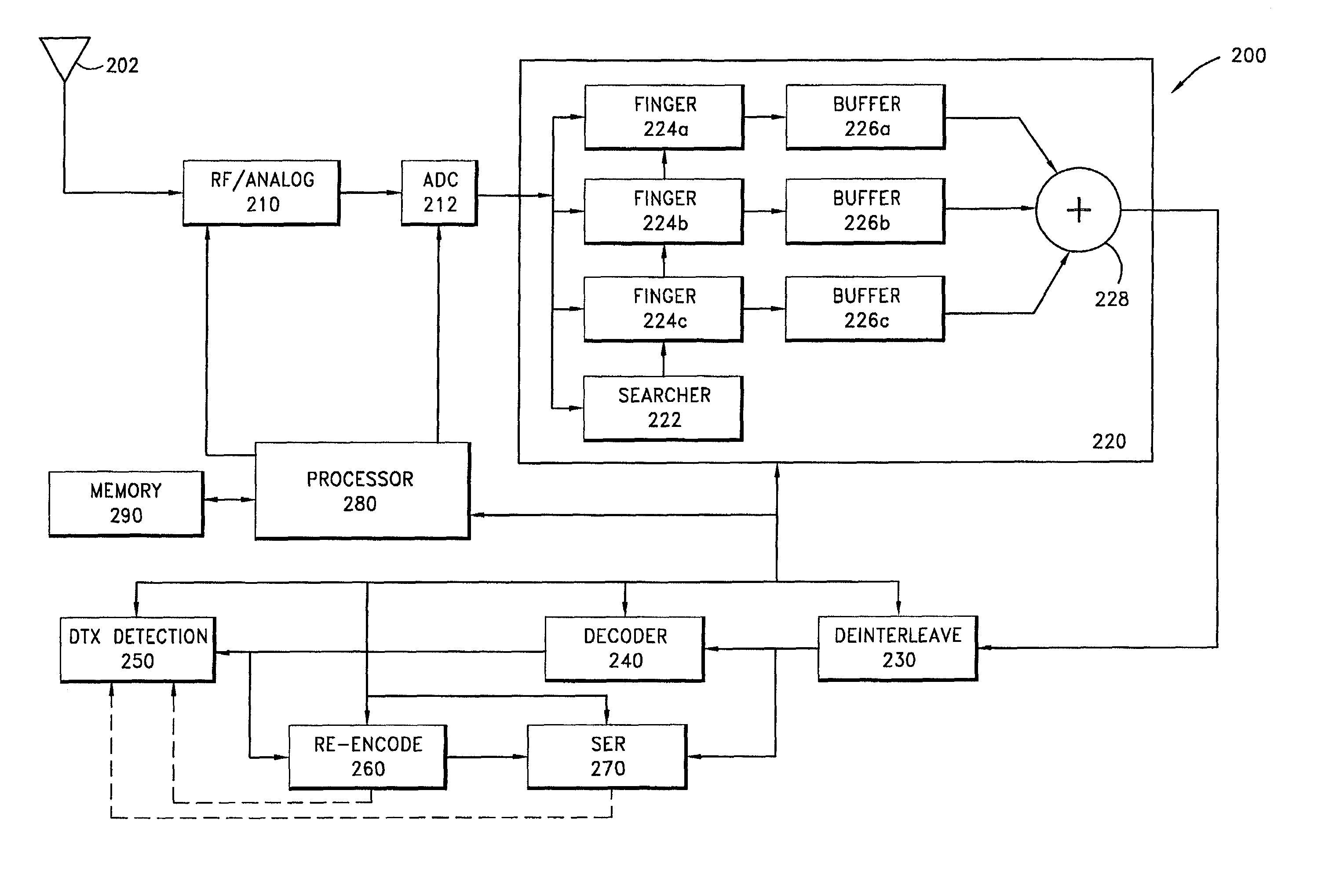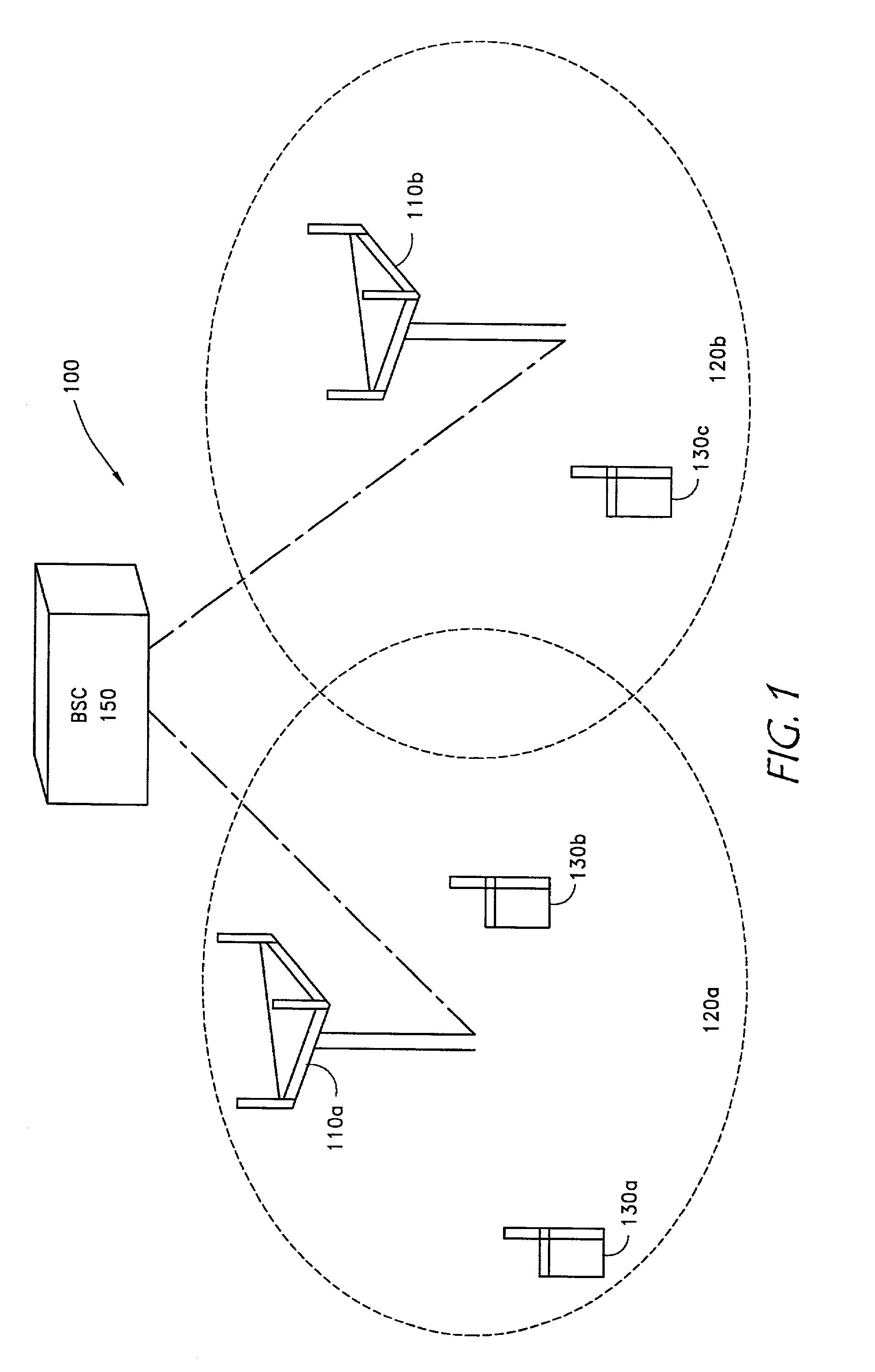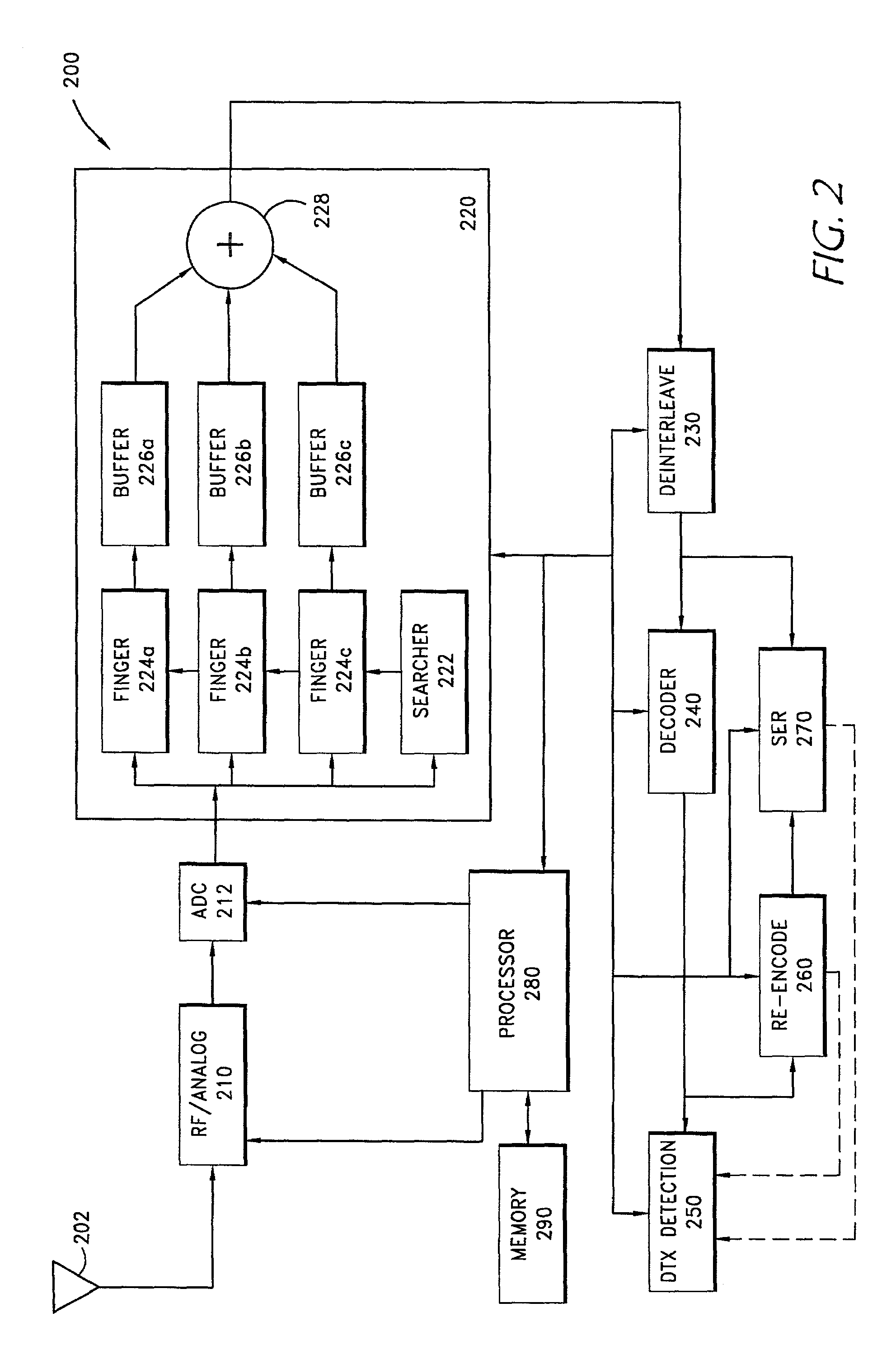Discontinuous transmission (DTX) detection
a technology of continuous transmission and detection field, applied in the direction of pulse technique, amplitude demodulation, high-level techniques, etc., can solve the problem of receiver facing the problem of determining, user may not be willing to use a ms connection to connect to a remote network, and not desirable to allocate a continuously active channel for a limited purpos
- Summary
- Abstract
- Description
- Claims
- Application Information
AI Technical Summary
Problems solved by technology
Method used
Image
Examples
Embodiment Construction
[0021] The CDMA 2000 standard provides nine radio configurations for the Forward Traffic Channel. The signals that may be transmitted on the Forward Traffic Channel are defined to include a Forward Dedicated Control Channel (F-DCCH), a Forward Fundamental Channel (F-FCH), a Forward Power Control Subchannel, Forward Supplemental Code Channels (F-SCCH), and Forward Supplemental Channels (F-SCH). Any one of the nine defined radio configurations may have all or a subset of all of the defined channels within the Forward Traffic Channel. The F-DCCH and F-SCH may be capable of discontinuous transmission. In the case of the F-DCCH, the decision to enable or disable transmission is made on a frame by frame basis.
[0022] The CDMA 2000 standard also provides for six different radio configurations for the Reverse Traffic Channel. The signals that may be transmitted on the Reverse Traffic Channel are defined to include a Reverse Dedicated Control Channel, a Reverse Fundamental Channel, a Reverse ...
PUM
 Login to View More
Login to View More Abstract
Description
Claims
Application Information
 Login to View More
Login to View More - R&D
- Intellectual Property
- Life Sciences
- Materials
- Tech Scout
- Unparalleled Data Quality
- Higher Quality Content
- 60% Fewer Hallucinations
Browse by: Latest US Patents, China's latest patents, Technical Efficacy Thesaurus, Application Domain, Technology Topic, Popular Technical Reports.
© 2025 PatSnap. All rights reserved.Legal|Privacy policy|Modern Slavery Act Transparency Statement|Sitemap|About US| Contact US: help@patsnap.com



